An institute with a character all of its own
The ETH Institute for Theoretical Studies (ETH-ITS) has really picked up speed since this summer, with six fellows devoting themselves to researching fundamental theories as guests of ETH Zurich. We paid them a visit.
The Clausiusstrasse leads from the ETH Main Building into the Oberstrass district. As you walk along it, after about four minutes you see two buildings on the left-hand side with red façades and white corner-stones all around. They were built in 1882 and used to be the homes of middle- to upper-class families.
Today, they are places for musings on theoretical principles. Since autumn 2013, the larger of the two houses has been home to the ETH Institute for Theoretical Studies (ETH-ITS). ETH Zurich set up this institute with the help of private donations. “We want to invite researchers to the ITS”, says Giovanni Felder, professor of mathematics and director of the institute, “who have distinguished themselves with their innovative theories about mathematics, computer science or natural sciences. We give them all the freedom they need to devote themselves for a complete year to researching fundamental theories.”
During the first year, the main focus was on setting up the ITS. Then in February, theoretical physicist and biologist
Terry Hwa arrived in Zurich as the first ITS fellow. The opening ceremony took place in the summer. Since then, the first generation of ITS fellows has been hard at work: four senior fellows and two junior fellows. For ETH President Ralph Eichler, this fulfils “a long-held dream”.
Mathematics as the language of dialogue
The red building is very smart, simple yet appealing, with its inviting wooden staircase. On the ground floor is a seminar room with brightly coloured chairs and house plants. The rooms are more like traditional studios than modern laboratories.
That is the intention: the setting is supposed to help encourage the fellows to talk to each other and share their ideas with researchers at ETH Zurich. “The ITS is intended to be a meeting place for researchers who want to engage in dialogue about new theories that go beyond their subject boundaries”, says Giovanni Felder.
Why the focus on theories? The theoretical parts of natural sciences and computer science increasingly involve difficult mathematics. In these three disciplines, the new development has enabled a fruitful dialogue to take place: the theoretical sciences and information science not only use a common mathematical language but also investigate cross-disciplinary questions and solutions. This is true, for example, of the currently very fertile field of research at the interface of mathematics and physics: “Mathematics is developing new methods that physicists make use of, and in return, many ideas from physics are stimulating mathematical research”, says Giovanni Felder, whose own career has taken him from doctoral student in physics to professor of mathematics. Typical areas of convergence include probability theory, statistical mechanics, quantum information, geometry and string theory. The latter sees elementary particles not as individual points but as swinging strings and is one candidate for a grand unified theory of the universe, which continues to elude scientists.
Physics as a source of inspiration
Emily Clader is researching how the concepts of string theory can be understood by using a mathematical language. The mathematician came to ITS as a junior fellow after completing her doctorate at the University of Michigan. She especially values the interdisciplinary sharing of ideas and the way researchers at the ITS bounce ideas off each other: “The ITS is very strongly connected to other departments at ETH Zurich and to other universities in Europe. For researchers at the beginning of their careers, this is particularly beneficial.”
Dmitry Chelkak also describes himself as doing pure mathematics, “but highly inspired by physics”. The Russian, who is a researcher at the Steklov Mathematical Institute, works on probability theory and statistical mechanics. “The ITS combines two attractive aspects: on the one hand, it is a stand-alone
institute that is not part of a department. On the other hand, it is fully integrated into ETH Zurich and only five minutes away from its main building. This closeness matters when it comes to collaboration”, says Chelkak.
The ITS does not focus on major research programmes, but rather small discussion groups. Typical examples include the ITS Science Colloquium and the workshops organised by the fellows. In the middle of October, for example, about 20 researchers from the fields of physics and computer science spent a week passionately debating quantum mechanics.
Quantum mechanics is a system for describing elementary particles, atoms and molecules. However, it involves counter-intuitive concepts whose physical interpretation is often subject to heated debate: “We discussed the foundations of quantum mechanics from different perspectives and with different beliefs”, says Gilles Brassard, senior fellow at the ITS and professor of computer science at the Université de Montréal. Brassard, who helped to organise the workshop, has been doing research at the interface of computer science and quantum mechanics for about 30 years and finds that “the ITS is creating a very fertile field for interdisciplinary research.”
Small institute, big networking
“The value of this kind of workshop”, says Renato Renner, ETH professor of theoretical physics, “lies in the fact that we gain an insight into a phenomenon from the point of view of different disciplines, and so are able to further develop a theory.” He values the ITS as an interdisciplinary institute which supplements departmental activities. Alongside Gilles Brassard, Charles H. Bennett, a physicist and information theorist from IBM Research.
in Yorktown Heights, New York, also took part in the workshop.
In 1983 the pair invented quantum cryptography and, in 1992, the principle of quantum teleportation. These are subjects which Renner is also researching and which will play a key role in future technologies for rapid and secure data transmission.
Polish-born number theorist and current ITS fellow, Henryk Iwaniec, has been researching in the US for about 30 years, first at the Institute for Advanced Study in Princeton, today as New Jersey State Professor at Rutgers University. “The ITS is an institute with a character all its own. You can’t really compare it to other institutes with permanent faculty. It is attractive for seniors and juniors who want to have time to work on their favourite problems”, he says. “The ITS is new and relatively small, but it is already quite large in that it has strong connections to its home university, ETH Zurich – much more than similar institutes have to theirs.”
This article was published first in «life - ETH community magazine».
People at ITS
-
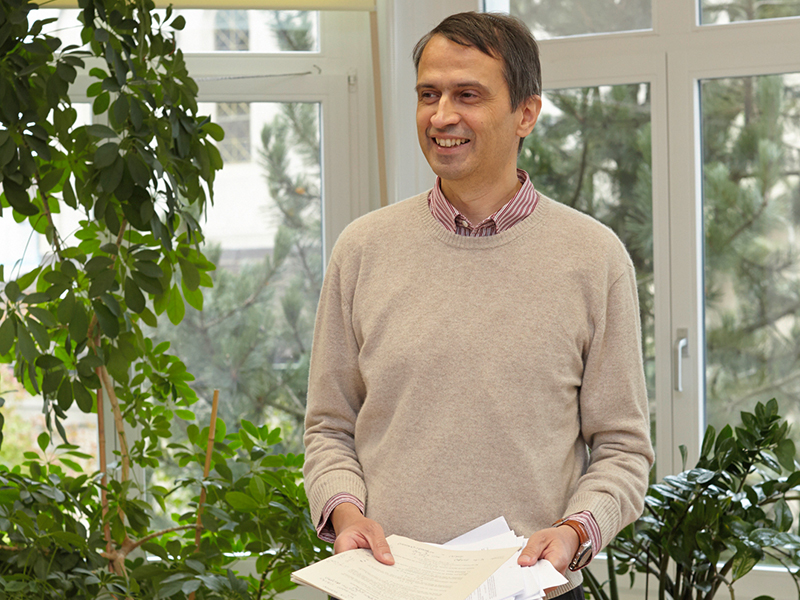
Giovanni Felder, director of the ITS (Photo: Giuseppe Micciché) -
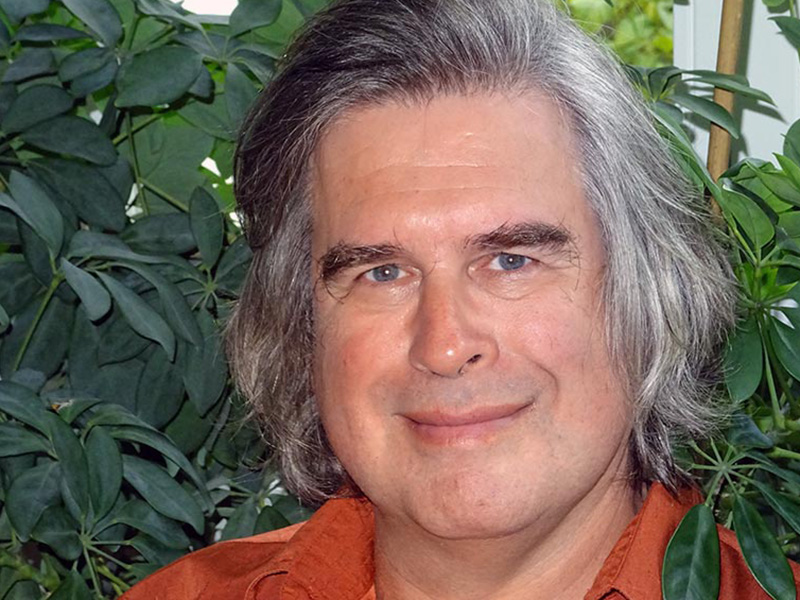
Gilles Brassard, Senior Fellow at the ITS. (Photo: ETH Zürich / Florian Meyer) -
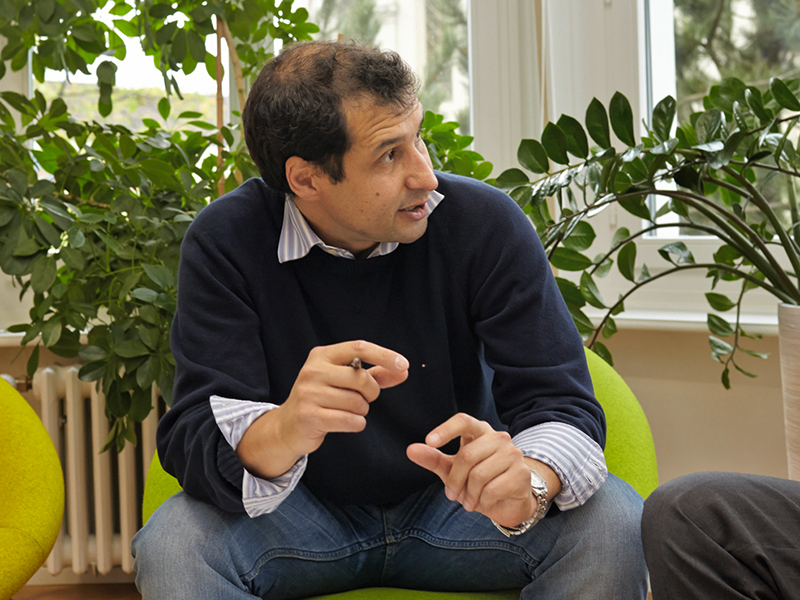
Probability theorist Dmitry Chelkakc (Bild: Giuseppe Micciché) -
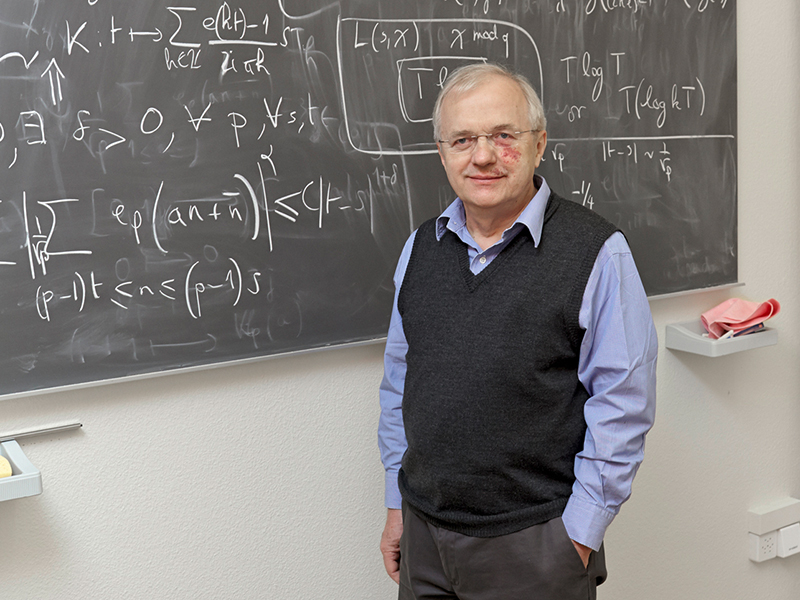
Number theorist Henryk Iwaniec (Photo: Giuseppe Micciché) -
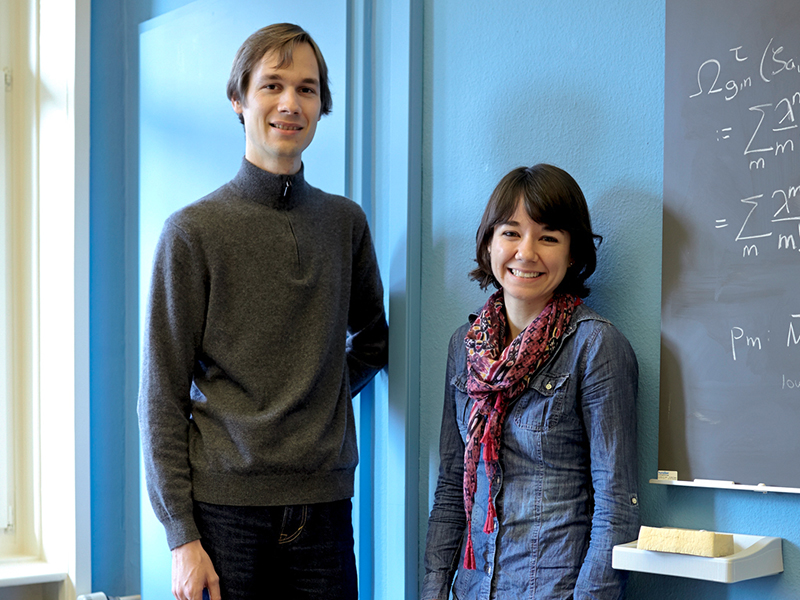
Understanding the ideas of physics through mathematics: Krzysztof Putyra und Emily Clader. (Photo: Giuseppe Micciché)
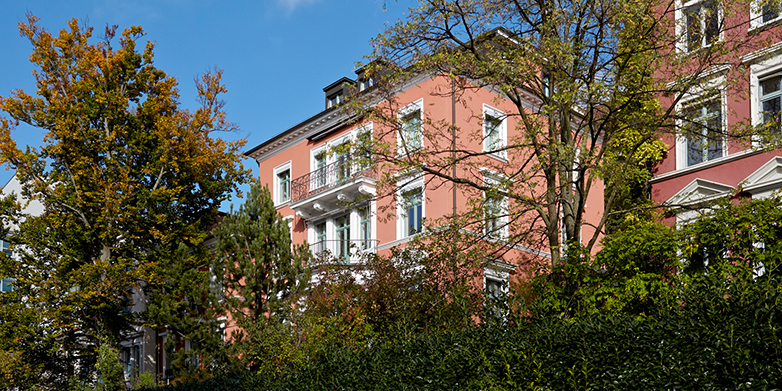
Comments
No comments yet